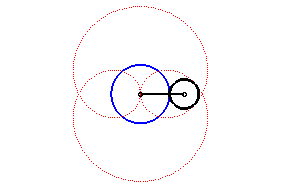When regular people talk about curves, they usually are thinking of people who are "traditionally-built", like Precious Ramotswe, the No.1 Lady Detective in Botswana.
(If you don't know her, go to a bookstore or check your video sources. I promise you won't be disappointed.)
Alternatively, they may have a winding road in mind:
When mathematicians talk about curves, they are referring to lines that can be defined using a math formula.
I found a website this weekend - 2D Curves - that shows 874 different types of curved lines, and explains how they are created.
People ask me how I can find this strange stuff on the web. Well, in this case I was looking at a new Cartier watch, on which the "Durer's Folium" curve resides. The second hand travels that weird shape in the middle, rather than just spinning around an axis:
I had no idea what a "Durer's Folium" curve was, so I went on a quest. Here's an animated illustration of what I found:
If you understand French, you can read the MathCurve site where this image originated. They generously gave me permission to reuse this animation. (See yesterday's blog.) If you don't know French math terminology, you can still enjoy the other graphics and animations you'll find there.
When we talk about curves in school, we often mean a "Bell Shaped Curve" which represents a distribution of test scores. The technical name for this curve is the Probability Density Function. Here's one:
Do we teach this in Excel Math? Yes and No. We do teach how to plot lines on a grid, but we don't quite reach the level where students are doing algebraic calculations of curves.






No comments:
Post a Comment
Type your comment here